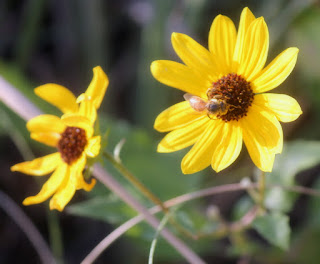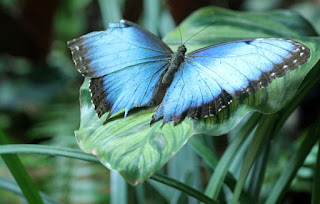 |
| Photo courtesy Ryan McGuire |
Wha…?
I can’t say I’ve ever been a big fan of stress. That is,
until I read The Upside of Stress: Why Stress is Good for You, and How to Get Good At It, by Kelly McGonigal, Ph.D. She completely changed the way I
look at stress—and at the challenges in my life.
I first began to consider that stress wasn’t the demon it’s
been made out to be when I listened to McGonigal’s TED talk on the subject
(thanks to Laure Ferlita for sending me the link). At the time, my main
takeaway from the talk was this quote: “Chasing meaning is better for your
health than trying to avoid discomfort.” I’d been avoiding discomfort as much
as I can, because I struggle with feelings of inadequacy and I don’t feel I
handle the stressful aspects of life well. (To put it in McGonigal’s terms, I’m
not “good at stress.”) However, McGonigal makes clear that there are
consequences to avoiding the discomfort of stress, including missed
opportunities and a limited future. She also notes that avoiding
anxiety-producing situations has the opposite effect to making you feel safe,
because it reinforces fears and increases your worries about future anxiety.
Huh.
I’d sum up the book this way: Whether or not stress is
harmful depends on your mindset. Change the way you perceive stress and you
will change how it affects you. As McGonigal writes, “The same experiences that
give rise to daily stress can also be sources of uplift or meaning—but we must
choose to see them that way.” How do we do this? McGonigal offers several tools
and exercises, or mindset interventions, to help us to make that shift. There’s
so much good material in the book that I recommend you read it. In the
meantime, here are some of the points I found most interesting:
One of the most effective ways to change how you think about
stress is to determine and write about your personal values. This
practice, according to McGonigal, makes people feel more in control, strong,
loving, and connected. Even better, the benefits of this practice can be long
lasting, even if you only do it once. Why is this so powerful? McGonigal
reports that analysis of studies concluded, “When people are connected to their
values, they are more likely to believe that they can improve their situation
through effort and the support of others. That makes them more likely to take
positive action and less likely to use avoidant coping strategies like
procrastination and denial.”
Changing how you respond to the physical symptoms of
anxiety and stress can help you see stressful events as challenges rather
than threats. Do you think anxiety
drains you, or can you see how it can be a source of energy? The only
difference between the rush you get when doing something fun/scary versus
something scary/scary is how you perceive the event. When you feel
physical and mental signs of anxiety and stress, tell yourself you’re excited.
I used this concept recently when the horse I was riding spooked. All that
adrenalin was helping me stay alert and focused! (Not to mention in the saddle
instead of on the ground.) As McGonigal says, turn your “uh-oh” to “oh, yeah!”
Failure and setbacks are NOT to be avoided. McGonigal
writes, “[People] view [failure] as something to avoid at all costs because it
will reveal that they aren’t smart or talented enough. This mindset can creep
in whenever we are at a growth edge, pursuing any goal or change that is beyond
our current abilities. Too often, we perceive setbacks as signals to stop—we
think they mean something is wrong with us or with our goals…”
A stress-free life is not necessarily a happier life.
Interestingly, people who have a life without adversity are less happy and
healthy than those who have experienced “an average number of traumatic
events,” and they’re significantly less satisfied with their lives, according
to McGonigal.
Yes, it is true that stress can be harmful under certain
circumstances, notably when you feel inadequate to it, it isolates you from
others, and it feels meaningless and against your will. While there may be
times when these conditions are beyond your control, the strategies mapped out
in The Upside of Stress can help you grow from stress, and learn to
transform it into something positive.
Some books have made a huge difference in my life—The
Upside of Stress is one of them. It left me feeling more optimistic about
my ability to thrive under stressful conditions rather than curl into a ball
and hide. Though I haven’t gone so far as to wish for stressful
experiences, after reading The Upside of Stress, I feel better prepared
to face them when they inevitably show up.
What stressful experiences have you found most meaningful?


































